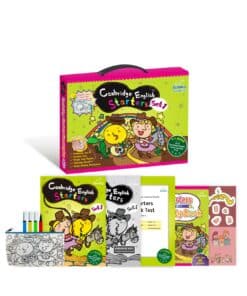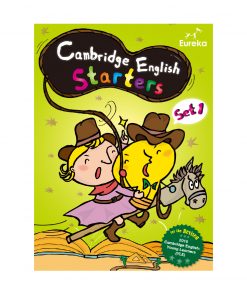Catch the Ball (Tenses)
Materials: Paper ball, or ball
Dynamic: Whole class
Procedure:
- Form a circle.
- Explain that you will throw a ball to one student. That student must think of and say a sentence in the present tense. That student then throws the ball to another student who then has to repeat the first student’s sentence but in the past tense (or any other tense taught).
- For example:
Amy: I play in the garden.
James: Amy played in the garden.
Grammar Square (Can be used for a variety of grammar items)
Materials: Board
Dynamic: 2 Groups
Procedure:
- Prepare a list of incorrect sentences taken from the topics of the class and number them 1-16 (this could be more if you want).
- Draw a 4×4 grid of squares on the board and number each square 1-16 (if you have more sentences then prepare a bigger grid if necessary.
- Split the class into 2 teams, with team A having to form a line from top to bottom on the grid and team B from left to right on the grid.
- Teams get points by choosing a square and trying to correct the corresponding sentence on your numbered list.
- If they get it wrong, do not at first say why, so the other team can try again or choose another sentence to correct.
- At the end of the game, give points as follows: 1 square = 1 point. 2 squares in a row = 3 points, 3 squares in a row = 5 points. 4 squares in a row = 10 points.
- You can also include ‘mystery squares’. If someone chooses one of these, both teams have a race to write down 10 items of a lexical/grammatical nature to revise that week’s work. The winning team wins the square.
B-I-N-G-O
Materials: Bingo cards
Dynamic: Whole class
Time: 10-15 minutes
Preparation: Blank (or filled in) bingo cards for each student
Procedure:
- Give each student a blank B-I-N-G-O card.
- For less-abled students, you may have words prepared already on the BINGO cards, but make sure you have written them down yourself so you know which words to call out.
- Call out a word and have students to make them on their cards if they have the word themselves.
- The first person to finish marking their entire page wins.
- Alternatively, the first person to get 3 or 4 in a row (depending on size of grid), wins.

Variations:
- Picture
Use pictures on the BINGO cards. Call out the words that relate (nouns, verbs, adjectives).

- Synonym
Advanced: Say a word and students have to see if they have a word with a similar or same meaning to the one given by the teacher (adjectives).

- Antonym
Advanced: Say a word and students have to see if they have a word with the opposite meaning to the one given by the teacher (adjectives).

- Verbs
Have past simple, past participle or -ing forms of verbs on Card. Teachers shouts out a base form of a verb and students to match.

*You may use an online BINGO card generator to make your own cards if necessary, For example, https://myfreebingocards.com/
I Have Never… (Present perfect)
Materials: None
Dynamic: Whole class
Procedure:
- Arrange the chairs in a circle with enough chairs for all but one student.
- The student without a chair stands in the middle and says a true sentence for themselves starting “I have never…”, for example “I have never eaten pork.”
- All the students for whom this is not true (i.e. they have eaten pork) must change places, which results in a scramble for seats and someone different in the middle.
Partner Up (Phrasal verbs)
Materials: Verbs and prepositions list
Dynamic: 2 Groups
Procedure:
- To prepare for the activity, write down on scrap pieces of paper, a range of verbs and prepositions on each piece.
- Announce to the students that they will play a game called Partner Up.
- The objective of the game is to match the verbs with an appropriate preposition to form phrasal verbs, and then to use them correctly in sentences.
- First, the students should divide themselves into the two groups — one for Verbs and one for Prepositions.
- Then a member of each group quickly collects the words representing their group (Verbs or Prepositions).
- Next, each Verb has to find a matching Preposition. The pair then run to the board and write their pair name there (e.g., look after, show off, put on).
- If two Verbs want the same partner (e.g., off for put off/show off), the pair that can think of a grammatical sentence with that Preposition first gets to keep the partner.
- Each group then has to make and say aloud a sentence to illustrate their partnership (e.g. My grandfather looks after me on weekends. / Peter is always showing off.)
- If time permits, the groups can now swap round and play again.
- The Verb and Preposition with the most sentences win the game.
Who Am I? (Yes/No questions)
Materials: Student names
Dynamic: Pairs
Procedure:
- Prepare a list of student’s names.
- Get students into pairs.
- For each student stick a name to their back which they can show their partner, but they cannot see it themselves.
- In their pairs they have to guess which student is stuck to their back by asking yes/no questions and their partner should answer accordingly.
- May need to remind students how to form yes/no questions.
- Alternatively, you can use celebrities, sports people, etc.
Example:
A: Do he/she wear glasses?
B: No.
A: Is he/she siting near me?
B: Yes.
Acrostics (Adjectives)
Materials: Paper
Dynamic: Pairs / Small groups
Procedure:
- Introduce acrostics: An acrostic is a poem where the first letter of each phrase/sentence spells out a word. The phrases or sentences are also usually relating to the word being spelt out.
- Give an example of an acrostic to explain it further.
Charming
Active
Tabby ( a cat with dark-coloured marks on grey or brown fur) - Now, get students to write their own acrostics in pairs or small groups.
- You may set the topic (e.g. names, food, animals, weather, etc.) and students must think of adjectives which relate to the word, as well as starting with the corresponding letter.
Other examples:
- Visit
Eat
Read
Buy - Funny
Reliable
Intelligent
Energetic
Never mean
Delicious - Jolly
Optimistic
Happy
Nice
How Am I Doing It? (Adverbs of Manner / Imperatives)
Materials: Student names
Dynamic: Whole class
Procedure:
- One student (Student A) has to think of an adverb of manner without telling the rest of the class (e.g. slowly). Otherwise, teacher should whisper one to the student.
- The other students must then give two or three orders (e.g. stand up! / Walk around the class.)
- Student A must follow each action in the manner they have chosen (e.g. Stand up slowly).
- The classmates must then guess the adverb based on Student A’s manner.
- Can play a few rounds with different students as the ‘adverb picker’.
Suggested adverbs:
- quickly / quietly / calmly / painfully / mysteriously / badly / slowly / loudly / lazily / dramatically / softly / shyly / angrily / strongly / sleepily / seriously / violently / nervously / happily / scarily / silently / suspiciously / easily / rudely
Suggested actions:
- Sit down! / Open the door. / Go to bed. / Do your homework. / Read a newspaper. / Dance to a song. / Stand up! / Walk around the room. / Wake up. / Go shopping. / Do yoga. / Watch a film. / Close the door. / Pick your nose. / Play football. / Cook dinner. / Play computer games.
Simon Says… (Prepositions of place)
Materials: Student names
Dynamic: Whole class
Procedure:
- Have all of your students stand, and choose one object that everyone has and can use while playing.
- You might choose a pencil, a book or their desk chair.
- Teacher will say a statement, and if it starts with ‘Simon says’, they should do the action. Otherwise they should stay still.
- Each instruction uses a preposition to describe where the player is in relation to the object you are using.
- Students are out if they do the wrong action and if they move when the teacher hasn’t said ‘Simon says’.
Example:
- Simon says sit on your chair.
- Simon says put your hand under your chair.
- Simon says stand behind your chair.
Sentence Building (Adjectives and nouns)
Materials: None
Dynamic: Whole class
Procedure:
Option 1
- Have students in a circle.
- One student thinks of a noun.
- The following student to their right then attempts to describe the noun by adding an appropriate adjective.
- This game can also help with demonstratives, articles and plural markers.
Example:
- Student A: This is a school.
- Student B: This is nice school.
- Student C: I have a pen.
- Student D: I have an orange pen.
- Student E: There are some birds in the tree.
- Student F: There are some blue birds in the tall tree.
Option 2
- Have students in a circle.
- One student thinks of an adjective.
- The following student to their right then chooses a noun that is appropriate with the adjective. For older students, get them to make a sentence.
Example:
- Student A: Ugly
- Student B: He has an ugly hat.
- Student C: Beautiful
- Student D: She is a beautiful girl.
- Student E: Small
- Student F: My house is small.
List and Mingle (Mixed grammar)
Materials: Ball (or something that can be passed round) ; timer
Dynamic: Whole class
Procedure:
- Have students in a circle.
- Create teams by having students count around the circle (1, 2, 3, 1, 2, 3, etc.) to designate which team they are on.
- Students will not move, but should remember their team number.
- The goal is to have members of each team mixed up and not seated next to each other in the large circle. List the teams on the board to keep track of points.
- Note that in this version of the game, points are actually damaging and the team that ends the game with the least amount of points is the winner!
- Give the object that will be passed around to the student who will go first. The student should hold on to the object until a verbal prompt is given.
- This student is “it” for the first round. At the moment the prompt is stated, start a timer for twenty seconds.
- The student who is “it” must pass the object clockwise to the next person as soon as they say the first item according to the prompt.
- Students continue to quickly pass the object around the circle as long as items are being listed by “it”. When five items have been listed, or when the timer goes off, the object stops.
- If the student who was originally “it” was able to list five words that correctly adhere to the prompt, then the person who is holding the object gets a point for his/her team.
- If the student who was originally “it” was unable to list eight words correctly before the allotted time, his/her team gets a point.
- The student who ends up holding the object is “it” for the next round. A new prompt is given, the timer starts, and the student passes the object clockwise as soon as they list the first word.
- Continue the game until all of the prompts have been given.
- The team with the fewest points wins!
- You may increase the time limit or number of words they should name.
Example:
Prompt: Name five uncountable nouns.
Students who is “it”: Tries to name five uncountable nouns as the ball gets passed around the circle.
If “it” says five uncountable nouns within the allotted time, the person holding the ball gets a point for their team. Otherwise “it” gets a point for their team.
Whoever is holding the ball after the round is the next “it”.
Suggested Prompts:
- List 5 adjectives beginning with ____.
- List 5 verbs in the ____ tense.
- List 5 nouns you will find in a ____.
- List 5 adverbs that could be used to describe the verb ____.
- List 5 prepositions that could be used with the verb ____ to make a phrasal verb.






